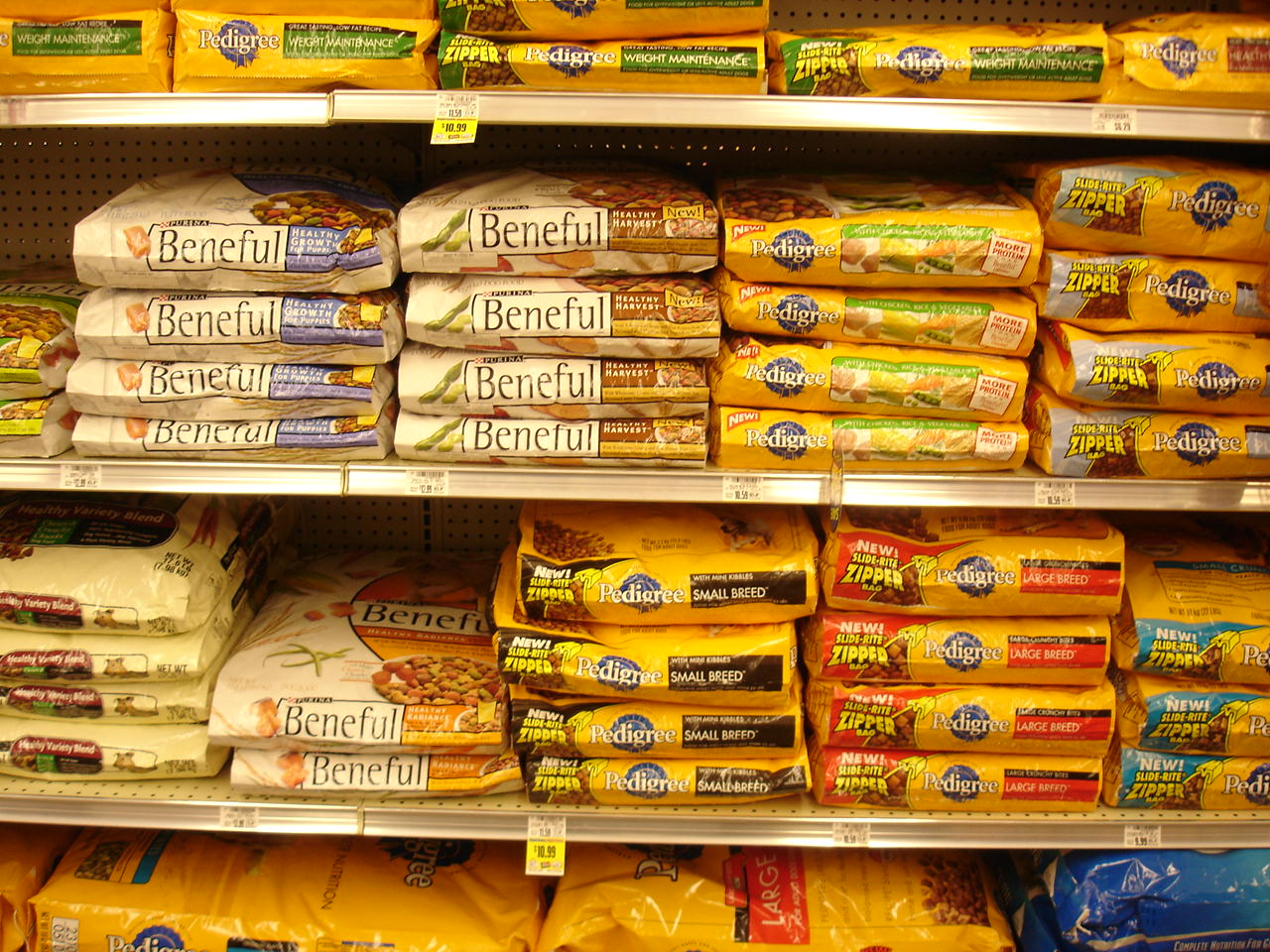The price of pet food in grocery and warehouse stores is hard to beat. The quality of that low-priced food, however, can be another story entirely. How does your choice measure up?

Have you wondered why some large bags of pet food can sell for under $30 while others cost two to three times that amount?
If you’re interested in improving the quality of the food that your pet eats but are reluctant to spend significantly more money, read on. You’re a candidate for a “value” food.
Value is an acceptable mix of quality and cost
In most cases, as the quality of a food increases, so does its selling price. Because of this, we can mislead ourselves into believing that a decent food can never have a low cost. The flip side of this misconception is believing that a more expensive food will always be better quality.
While both of these beliefs are true in some cases, every rule has its exceptions. The selling price of a food does not reflect its true cost until you consider a few other factors. Take these into consideration and you’re in a much better position to determine a food’s value.
What you pay is not the only consideration of a pet food’s cost
When you find yourself replacing an inexpensive bag of food every few weeks, the factor of quality begins to become clearer. What if you only had to buy food every 4 weeks instead of every 3 weeks? Would that longer-lasting bag of food justify its higher cost?
Higher quality foods will use better ingredients. These better ingredients are more digestible. More digestible ingredients allow your pet to receive adequate nutrition from a smaller volume of food. This is one reason a bag of better quality food lasts longer than an inferior quality food.
The higher selling price of a better quality food is often offset by the reduction in your daily feeding amount.
Feeding guidelines give you a “cheat sheet” for comparing how long a bag lasts

There’s a quick and easy way to compare the digestibility of foods. It has nothing to do with reading an Ingredient List and everything to do with the age and weight of your pet. Simply compare the recommended Feeding Guidelines found on each bag of food.
By comparing the Feeding Guidelines, you’ll immediately see whether you’re comparing two foods of comparable quality. If your $30 bag of food recommends 2 3/4 cups per day, and a $40 bag requires just 2 cups per day, you’ll come out slightly ahead by spending the extra $10.
You receive more than a financial benefit when you compare your food this way. Along with a few extra dollars in your pocket, your pet will not have to work as hard to process more food each day. You’ll also enjoy a reduction in the amount of waste to cleanup. More digestible, higher quality food means less poop!
When your food is high in quality and “low” in price, you’ve found a good value
It used to be simpler to compare Feeding Guidelines to determine how long a bag of food would last when all manufacturers used the same size bags. Now you must take size into consideration. You can’t accurately compare how long a 30 and 40 lb bag will last without adjusting for the different weights. But even without taking steps to determine how long a bag will last, the Feeding Guidelines still show how daily use will compare.
You can’t accurately compare how long a 30 and 40 lb bag will last without adjusting for the different weights. But even without taking steps to determine how long a bag will last, the Feeding Guidelines still show how daily use will compare.
Keep in mind that Feeding Guidelines don’t stand on their own. The first indication of quality is found in the Ingredient List. Feeding Guidelines can then be used to compare the quality and value of foods that appear similar in ingredients and selling price. In these cases, Feeding Guidelines give you a simple way to compare quality and your actual cost to feed.
Where do your choices fall on the value scale?
When cost trumps quality, that does not necessarily mean you have to completely sacrifice good quality. It simply means your value judgement is based on where you choose to draw that line.
When quality is slightly more important than cost, that doesn’t mean you must reach for the most expensive food on the shelf. Use the Feeding Guidelines to your benefit and you can settle on an acceptable combination of higher quality at reasonable cost.
It’s a simple way to use your value judgement when choosing a pet food!

Leave a Reply